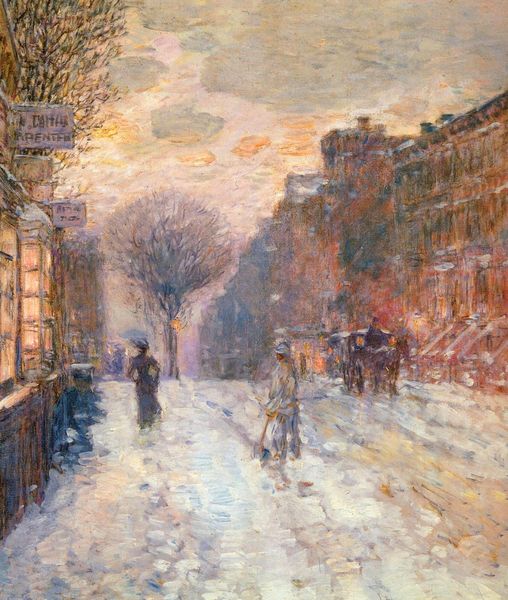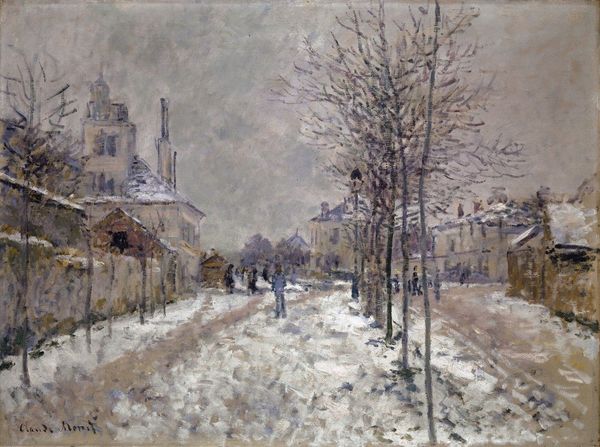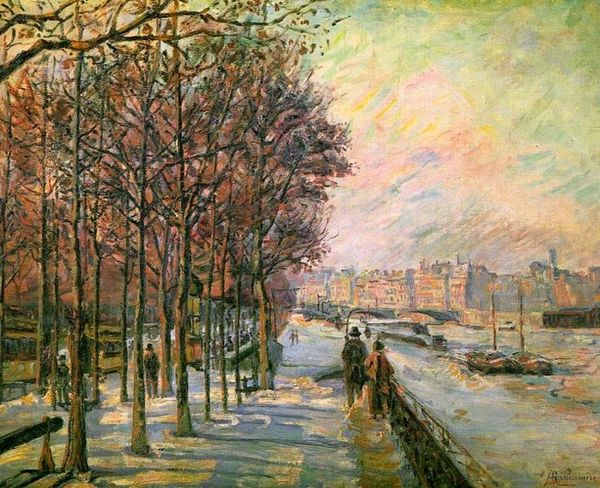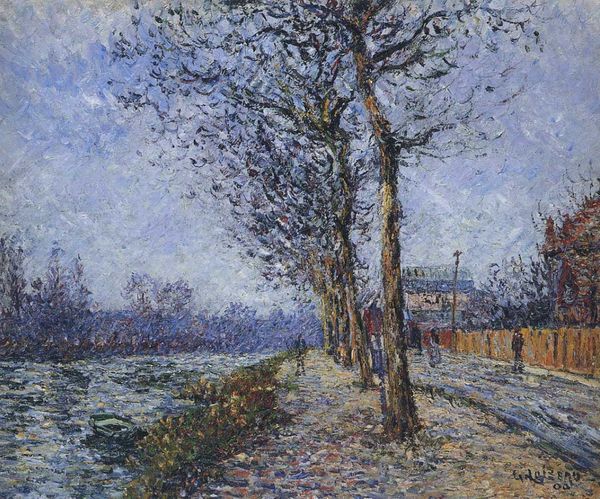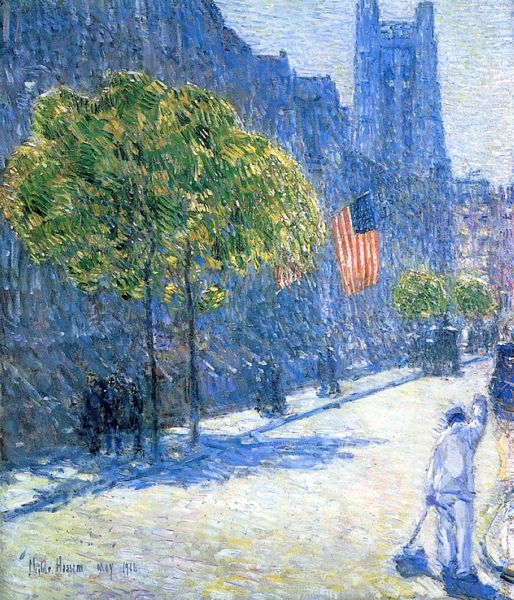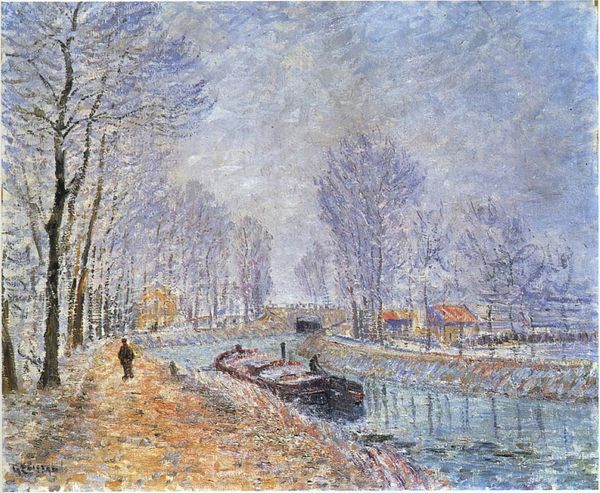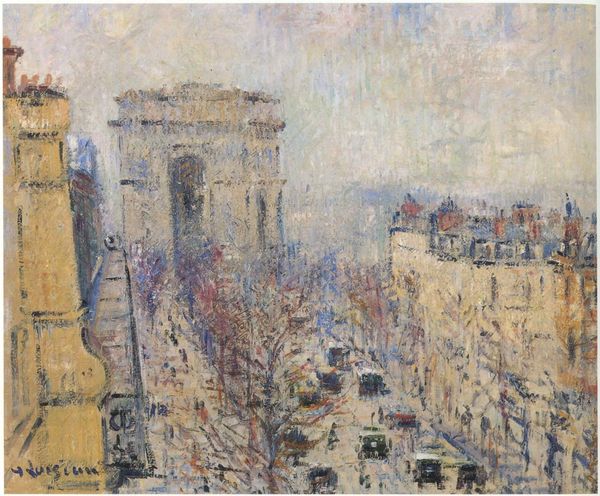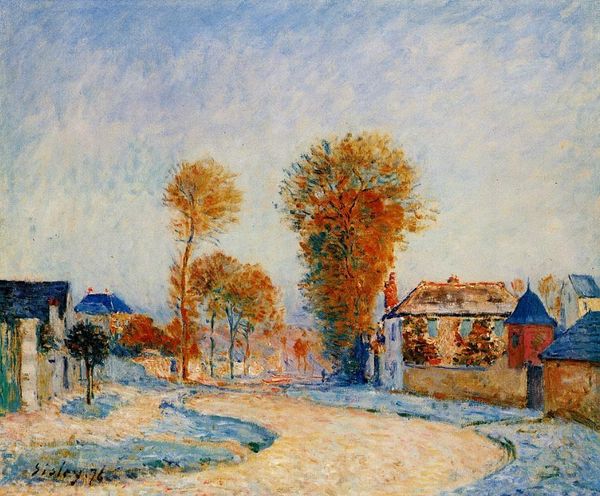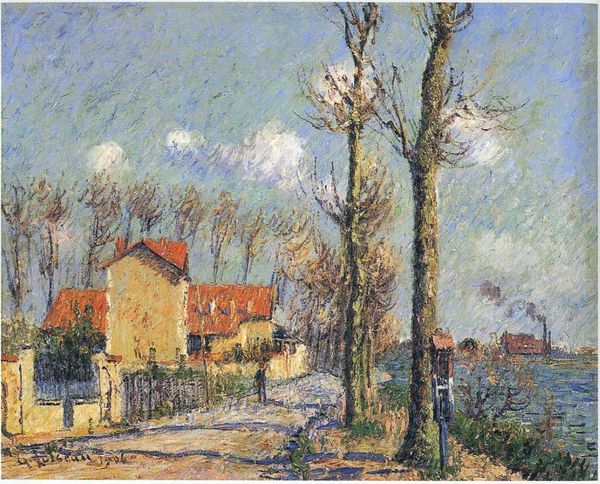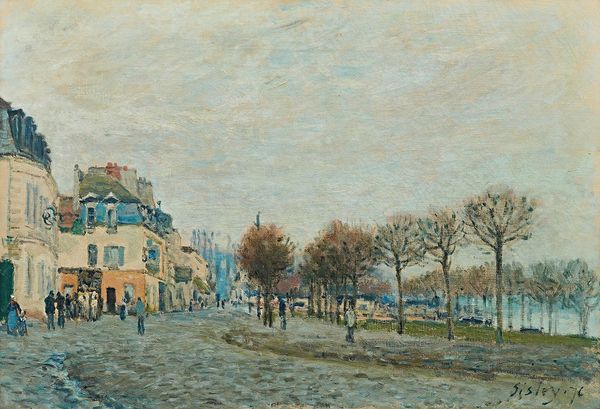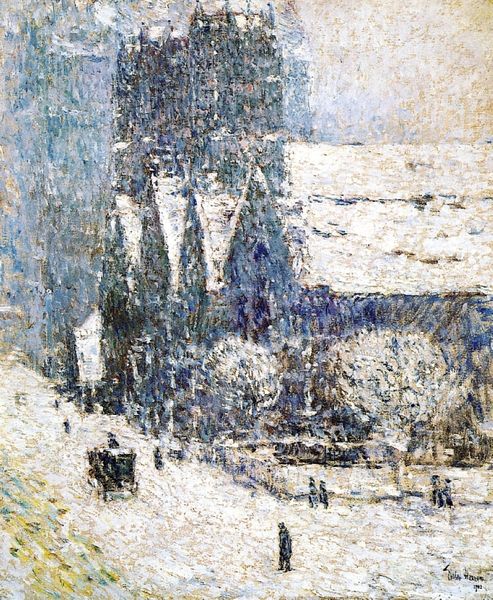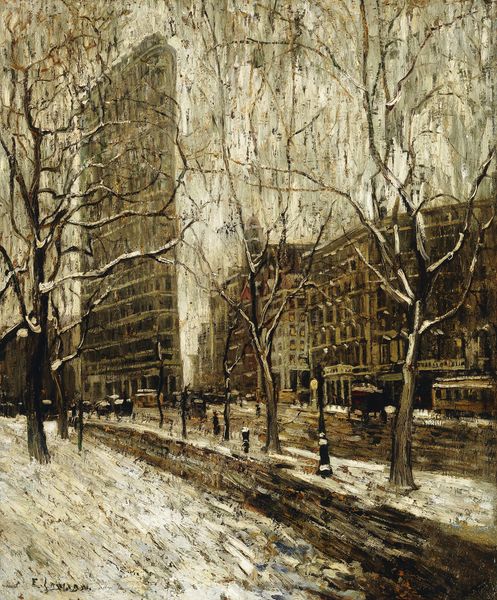
Copyright: Public domain
Curator: Looking at Childe Hassam's "New York Landscape" painted in 1918, I'm immediately struck by how cool and crisp it feels, a sense of the late winter or early spring permeating everything. Editor: Yes, and note how Hassam renders the scene with these distinct, almost separate strokes of oil paint; each dab is a deliberate construction of light and texture, it seems very intentional and process-driven. Curator: Indeed. It's tempting to view this as purely an Impressionistic scene of urban life, but consider the broader context of 1918: the end of World War I, a period of intense patriotism, which we see reflected in the prominent display of American flags on the buildings. How does that impact the visual narrative, don't you think? Editor: Well, the presence of those flags, and the almost regimented line of trees...they do prompt one to ponder the artist's relationship to the state, and, given his own relatively privileged position, possibly also question his vision of the working class. Curator: Speaking of materials, observe the rough texture, seemingly applied in the open air, “en plein air,” we see evidence of how he struggled against the weather in his technique, capturing the effects of light through labor. Editor: And how does this rendering of the city interact with early 20th-century gender roles? Are women visible in this crowd, are there gendered economic struggles that affect who is represented, or rendered invisible, within urban planning? It seems that looking for where those figures are *not* gives us information. Curator: It highlights the shift away from a strict narrative tradition, toward a focus on sensation, lived experience in a rapidly modernizing city where social structures, labor divisions and national identity are visibly displayed. The flags signify American exceptionalism but the bare trees signal fragility. Editor: Precisely, by attending to these aspects, this Impressionistic painting can become an activist project through analysis, not through deliberate messaging, and this reveals artmaking as a critical labor practice Curator: The flags feel performative but through his rendering in rough texture he gives equal emphasis to a winter's end scene. I do see the ways in which you are able to see activism in its creation, as a labor of observation itself. Editor: Seeing both the aesthetic intention of Impressionism combined with the historical weight provides, in my opinion, a powerful view of this work.
Comments
No comments
Be the first to comment and join the conversation on the ultimate creative platform.
